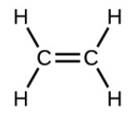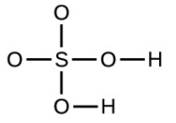
Chemistry (OER)
2nd Edition
ISBN: 9781947172616
Author: OpenStax
Publisher: OpenStax College
expand_more
expand_more
format_list_bulleted
Concept explainers
Textbook Question
Chapter 2, Problem 29E
Write the molecular and empirical formulas of the following compounds:



Expert Solution & Answer
Want to see the full answer?
Check out a sample textbook solution
Students have asked these similar questions
Add substituents to draw the conformer below (sighting down
the indicated bond), then rotate the back carbon to provide the
anti staggered conformer.
+
H3C
H
Ph
H
Problem 25 of 30
Drawing
Atoms, Bonds
and Rings
Charges
Tap a node to see suggestions
H
H
H
Undo
Rasat
Remove
Done
Finish update
Rotate
Submit
what temperature does a 50% (mole
fraction) of ammonia/water liquid
mixture boil at 1 atm
1) Suppose 0.1 kg ice at 0°C (273K) is in 0.5kg water at 20°C (293K). What is the change in entropy of the ice as it melts at 0°?
To produce the original "water gas" mixture, carbon (in a combustible form known as coke) is reacted with steam: 131.4 kJ + H20(g) + C(s) → CO(g) + H2(g) From this information and the equations in the previous problem, calculate the enthalpy for the combustion or carbon to form carbon dioxide.
kindly show me how to solve both parts of the same long problem. Thanks
Chapter 2 Solutions
Chemistry (OER)
Ch. 2 - In the following drawing, the green spheres...Ch. 2 - Which postulate of Dalton’s theory is consistent...Ch. 2 - Identify the postulate of Dalton’s theory that is...Ch. 2 - Samples of compound X, Y, and Z are analyzed, with...Ch. 2 - The existence of isotopes violates one of the...Ch. 2 - How are electrons and protons similar? How are...Ch. 2 - How are protons and neutrons similar? How are they...Ch. 2 - Predict and test the behavior of a particles fired...Ch. 2 - Predict and test the behavior of a particles fired...Ch. 2 - In what way are isotopes of a given element always...
Ch. 2 - Write the symbol for each of the following ions:...Ch. 2 - Write the symbol for each of the following ions:...Ch. 2 - Open the Build an Atom simulation...Ch. 2 - Open the Build an Atom simulation...Ch. 2 - Open the Build an Atom simulation...Ch. 2 - Determine the number of protons, neutrons, and...Ch. 2 - The following are properties of isotopes of two...Ch. 2 - Give the number of protons, electrons, and...Ch. 2 - Give the number of protons, electrons, and...Ch. 2 - Click on the site...Ch. 2 - Click on the site...Ch. 2 - An element has the following natural abundances...Ch. 2 - Average atomic masses listed by JUPAC are based on...Ch. 2 - Variations in average atomic mass may be observed...Ch. 2 - The average atomic masses of some elements may...Ch. 2 - The 18O:16O abundance ratio in some meteorites is...Ch. 2 - Explain why the symbol for an atom of the element...Ch. 2 - Explain why the symbol for the element sulfur and...Ch. 2 - Write the molecular and empirical formulas of the...Ch. 2 - Write the molecular and empirical formulas of the...Ch. 2 - Determine the empirical formulas for the following...Ch. 2 - Determine the empirical formulas for the following...Ch. 2 - Write the empirical formulas for the following...Ch. 2 - Open the Build a Molecule simulation...Ch. 2 - Open the Build a Molecule simulation...Ch. 2 - Open the Build a Molecule simulation...Ch. 2 - Using the periodic table, classify each of the...Ch. 2 - Using the periodic table, classify each of the...Ch. 2 - Using the periodic table, Identify the lightest...Ch. 2 - Using the periodic table, Identify the heaviest...Ch. 2 - Use the periodic table to give the name and symbol...Ch. 2 - Use the periodic table to give the name and symbol...Ch. 2 - Write a symbol for each of the following neutral...Ch. 2 - Write a symbol for each of the following neutral...Ch. 2 - Using the periodic table, predict whether the...Ch. 2 - Using the periodic table, predict whether the...Ch. 2 - For each of the following compounds, state whether...Ch. 2 - For each of the following compounds, state whether...Ch. 2 - For each of the following pairs of ions, write the...Ch. 2 - For each of the following pairs of ions, write the...Ch. 2 - Name the following compounds: CsCl BaO K2S BeCl2...Ch. 2 - Name the following compounds: NaF Rb2O BCl3 H2Se...Ch. 2 - Write the formulas of the following compounds:...Ch. 2 - Write the formulas of the following compounds:...Ch. 2 - Write the formulas of the following compounds:...Ch. 2 - Write the formulas of the following compounds:...Ch. 2 - Each of the following compounds contains a metal...Ch. 2 - Each of the following compounds contains a metal...Ch. 2 - The following ionic compounds are found in common...Ch. 2 - The following ionic compounds are found in common...Ch. 2 - What are the IUPAC names of the following...
Additional Science Textbook Solutions
Find more solutions based on key concepts
A source of electromagnetic radiation produces infrared light. Which of the following could be the wavelength ...
Chemistry: The Central Science (14th Edition)
1. Why is the quantum-mechanical model of the atom important for understanding chemistry?
Chemistry: Structure and Properties (2nd Edition)
In your own words, briefly distinguish between relative dates and numerical dates.
Applications and Investigations in Earth Science (9th Edition)
Endospore formation is called (a) _____. It is initiated by (b) _____. Formation of a new cell from an endospor...
Microbiology: An Introduction
Where are skeletal cartilages located?
Human Anatomy & Physiology (2nd Edition)
A backpacker wants to carry enough fuel to heat 2.5 kg of water from 25 C to 100.0 C. If the fuel she carries p...
Introductory Chemistry (6th Edition)
Knowledge Booster
Learn more about
Need a deep-dive on the concept behind this application? Look no further. Learn more about this topic, chemistry and related others by exploring similar questions and additional content below.Similar questions
- we were assigned to dilute 900ppm in to 18ppm by using only 250ml vol flask. firstly we did calc and convert 900ppm to 0.9 ppm to dilute in 1 liter. to begin the experiment we took 0,225g of kmno4 and dissolved in to 250 vol flask. then further we took 10 ml sample sol and dissolved in to 100 ml vol flask and put it in to a spectrometer and got value of 0.145A . upon further calc we got v2 as 50ml . need to find DF, % error (expval and accptVal), molarity, molality. please write the whole report. thank you The format, tables, introduction, procedure and observation, result, calculations, discussion and conclusionarrow_forwardQ5. Predict the organic product(s) for the following transformations. If no reaction will take place (or the reaction is not synthetically useful), write "N.R.". Determine what type of transition state is present for each reaction (think Hammond Postulate). I Br₂ CH3 F2, light CH3 Heat CH3 F₂ Heat Br2, light 12, light CH3 Cl2, light Noarrow_forwardNonearrow_forward
- In the phase diagram of steel (two components Fe and C), region A is the gamma austenite solid and region B contains the gamma solid and liquid. Indicate the degrees of freedom that the fields A and B have,arrow_forwardFor a condensed binary system in equilibrium at constant pressure, indicate the maximum number of phases that can exist.arrow_forwardPart V. Label ad match the carbons in compounds Jane and Diane w/ the corresponding peak no. in the Spectra (Note: use the given peak no. To label the carbons, other peak no are intentionally omitted) 7 4 2 -0.13 -0.12 -0.11 -0.10 -0.08 8 CI Jane 1 -0.09 5 210 200 190 180 170 160 150 140 130 120 110 100 -8 90 f1 (ppm) 11 8 172.4 172.0 f1 (ppr HO CI NH Diane 7 3 11 80 80 -80 -R 70 60 60 2 5 -8 50 40 8. 170 160 150 140 130 120 110 100 90 -0 80 70 20 f1 (ppm) 15 30 -20 20 -60 60 -0.07 -0.06 -0.05 -0.04 -0.03 -0.02 -0.01 -0.00 -0.01 10 -0.17 16 15 56 16 -0.16 -0.15 -0.14 -0.13 -0.12 -0.11 -0.10 -0.09 -0.08 -0.07 -0.06 -0.05 -0.04 17.8 17.6 17.4 17.2 17.0 f1 (ppm) -0.03 -0.02 550 106 40 30 20 20 -0.01 -0.00 F-0.01 10 0arrow_forward
- n Feb 3 A T + 4. (2 pts) Draw the structure of the major component of the Limonene isolated. Explain how you confirmed the structure. 5. (2 pts) Draw the fragment corresponding to the base peak in the Mass spectrum of Limonene. 6. (1 pts) Predict the 1H NMR spectral data of R-Limonene. Proton NMR: 5.3 pon multiplet (H Ringarrow_forwardPart VI. Ca H 10 O is the molecular formula of compound Tom and gives the in the table below. Give a possible structure for compound Tom. 13C Signals summarized C1 C2 C3 C4 C5 C6 C7 13C shift (ppm) 23.5 27.0 33.0 35.8 127 162 205 DEPT-90 + DEPT-135 + +arrow_forward2. Using the following data to calculate the value of AvapH o of water at 298K. AvapH o of water at 373K is 40.7 kJ/mol; molar heat capacity of liquid water at constant pressure is 75.2J mol-1 K-1 and molar heat capacity of water vapor at constant pressure is 33.6 J mol-1 K-1.arrow_forward
arrow_back_ios
SEE MORE QUESTIONS
arrow_forward_ios
Recommended textbooks for you
 Chemistry: The Molecular ScienceChemistryISBN:9781285199047Author:John W. Moore, Conrad L. StanitskiPublisher:Cengage Learning
Chemistry: The Molecular ScienceChemistryISBN:9781285199047Author:John W. Moore, Conrad L. StanitskiPublisher:Cengage Learning Chemistry by OpenStax (2015-05-04)ChemistryISBN:9781938168390Author:Klaus Theopold, Richard H Langley, Paul Flowers, William R. Robinson, Mark BlaserPublisher:OpenStax
Chemistry by OpenStax (2015-05-04)ChemistryISBN:9781938168390Author:Klaus Theopold, Richard H Langley, Paul Flowers, William R. Robinson, Mark BlaserPublisher:OpenStax World of Chemistry, 3rd editionChemistryISBN:9781133109655Author:Steven S. Zumdahl, Susan L. Zumdahl, Donald J. DeCostePublisher:Brooks / Cole / Cengage Learning
World of Chemistry, 3rd editionChemistryISBN:9781133109655Author:Steven S. Zumdahl, Susan L. Zumdahl, Donald J. DeCostePublisher:Brooks / Cole / Cengage Learning Chemistry: Principles and PracticeChemistryISBN:9780534420123Author:Daniel L. Reger, Scott R. Goode, David W. Ball, Edward MercerPublisher:Cengage Learning
Chemistry: Principles and PracticeChemistryISBN:9780534420123Author:Daniel L. Reger, Scott R. Goode, David W. Ball, Edward MercerPublisher:Cengage Learning General, Organic, and Biological ChemistryChemistryISBN:9781285853918Author:H. Stephen StokerPublisher:Cengage Learning
General, Organic, and Biological ChemistryChemistryISBN:9781285853918Author:H. Stephen StokerPublisher:Cengage Learning Chemistry & Chemical ReactivityChemistryISBN:9781337399074Author:John C. Kotz, Paul M. Treichel, John Townsend, David TreichelPublisher:Cengage Learning
Chemistry & Chemical ReactivityChemistryISBN:9781337399074Author:John C. Kotz, Paul M. Treichel, John Townsend, David TreichelPublisher:Cengage Learning

Chemistry: The Molecular Science
Chemistry
ISBN:9781285199047
Author:John W. Moore, Conrad L. Stanitski
Publisher:Cengage Learning

Chemistry by OpenStax (2015-05-04)
Chemistry
ISBN:9781938168390
Author:Klaus Theopold, Richard H Langley, Paul Flowers, William R. Robinson, Mark Blaser
Publisher:OpenStax

World of Chemistry, 3rd edition
Chemistry
ISBN:9781133109655
Author:Steven S. Zumdahl, Susan L. Zumdahl, Donald J. DeCoste
Publisher:Brooks / Cole / Cengage Learning

Chemistry: Principles and Practice
Chemistry
ISBN:9780534420123
Author:Daniel L. Reger, Scott R. Goode, David W. Ball, Edward Mercer
Publisher:Cengage Learning

General, Organic, and Biological Chemistry
Chemistry
ISBN:9781285853918
Author:H. Stephen Stoker
Publisher:Cengage Learning

Chemistry & Chemical Reactivity
Chemistry
ISBN:9781337399074
Author:John C. Kotz, Paul M. Treichel, John Townsend, David Treichel
Publisher:Cengage Learning
Types of Matter: Elements, Compounds and Mixtures; Author: Professor Dave Explains;https://www.youtube.com/watch?v=dggHWvFJ8Xs;License: Standard YouTube License, CC-BY
